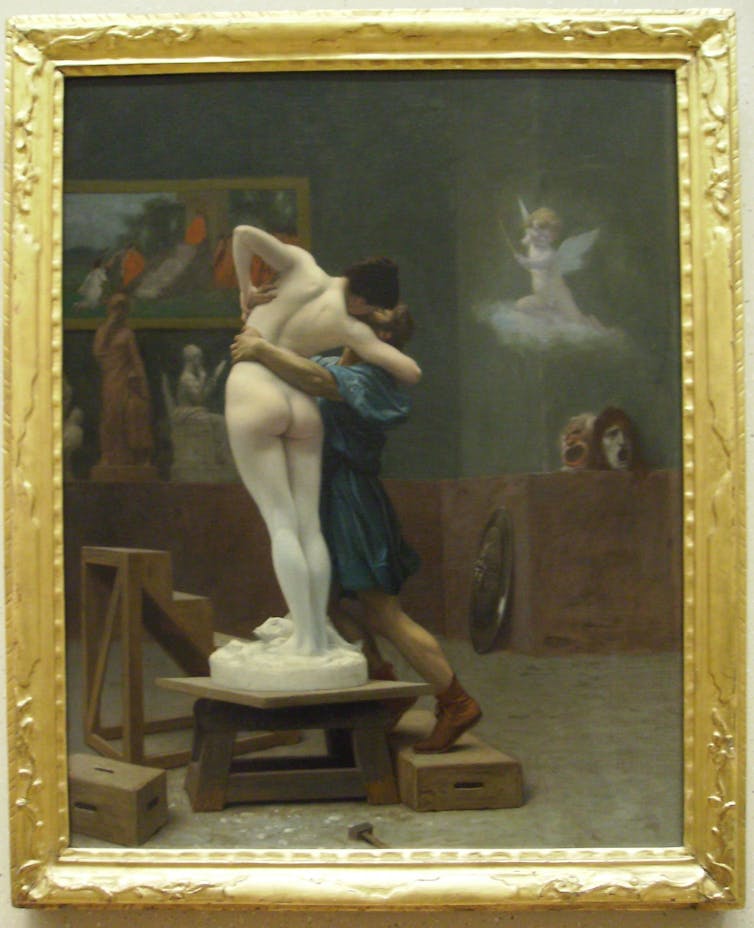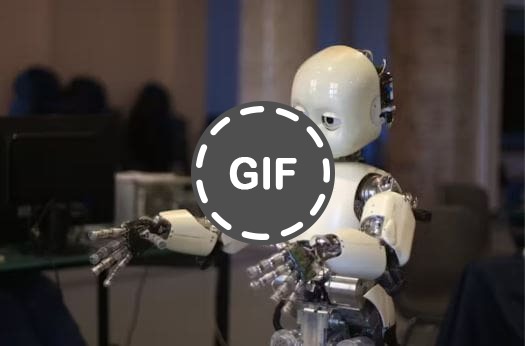Written by Mark Patterson University of Pittsburgh
Issues of racial and gender bias in the data used to train artificial intelligence algorithms and large-scale language models such as ChatGPT have captured the attention of researchers and made headlines. But these problems also arise with social robots, whose bodies are modeled after non-threatening versions of humans or animals, and which are designed to interact with people.
The purpose of the subfield of social robotics, called socially assisted robotics, is to interact with ever more diverse groups of people. The noble intention of its practitioners is to “create the machines that best help people help themselves,” writes one of its pioneers, Maya Matarić. The robot is already being used to help people on the autism spectrum, children with special needs and stroke patients who require physical rehabilitation.
But these robots do not look like humans, nor do they interact with people in ways that reflect even basic aspects of society's diversity. As a sociologist who studies human-robot interaction, I believe this problem will only get worse. Currently, children of color are diagnosed with autism at higher rates than white children in the United States, and many of these children may end up interacting with white robots. be.
So why did we choose the famous Twitter hashtag #robotssowhite to coincide with the 2015 Oscars?
Why do robots tend to be white?
Given the diversity of people they come into contact with, why does Kaspar, who was designed to interact with autistic children, have rubbery skin that resembles Caucasians? In schools and museums Why are the robots used, Nao, Pepper, and iCub, covered in shiny white plastic? In The Whiteness of AI, technology ethicist Stephen Cave and science communication researcher Kanta Dihal discusses racial bias in AI and robotics, noting the preponderance of stock images online of robots with reflective white surfaces.
What is going on here?
One question is: What kind of robots are already out there? Rather than being developed from scratch, most robots are purchased by engineering labs for projects, tuned with custom software, and sometimes integrated with other technology, such as robot hands or skins. The robotics team is therefore constrained by the design choices made by the original developers (Aldebaran in the case of Pepper and the Italian Institute of Technology in the case of the iCub). These design choices tend to follow a clinical, clean look with glossy white plastic, similar to other technology products such as the original iPod.
In a paper I presented at the 2023 American Sociological Association conference, I call this “manipulated imaginary poverty.”
How society imagines robots
Anthropologist Lucy Suchman's classic book on human-machine interaction has been updated with an additional chapter on robotics, in which she discusses what robots should look like. Discusses “cultural imagination.'' Cultural imaginaries are those shared through representations in texts, images, and films that collectively shape people's attitudes and perceptions. In the case of robots, the cultural imagination is derived from his science fiction.
This cultural imaginary contrasts with what Neda Atanasoski and Kalindi Vora call the “engineering imaginary,” a more pragmatic concern with how computer science and engineering teams view robot bodies. I can. This is a hotly contested area in feminist scientific research, for example Jennifer Lee's The Robotic Imagination and Atanasoski and Vora's Surrogate Humanity, which explore the gender and human nature that leads people to design service robots. It criticizes the assumptions of seeds. Daily work as a woman.
The cultural imaginary of robots as white and, in fact, usually female, dates back to ancient Europe, when novels and films exploded at the height of industrial modernity. From the first mention of the word “android” in Auguste Villiers de L'Isle-Adam's 1886 novel “The Eve of the Future” to “robot” in Karel Capek's 1920 play “Rossum's Universal Robot” '' and the introduction of the word sexual robot Maria from Thea von Harbou's 1925 novel Metropolis (based on her husband Fritz Lang's famous 1927 film of the same name), a fictional robot. was quickly feminized and degraded.
Perhaps the prototype of this cultural imagination lies in ancient Rome. Ovid's Metamorphoses (8 AD) depicts a statue of Galatea in “pure white ivory” with whom her creator, Pygmalion, falls in love. Pygmalion prayed to Aphrodite to bring Galatea back to life, and his wish was granted. This story has been made into numerous literary, poetic, and film adaptations, including his one of cinema's first special effects in his 1898 film by Méliès. Paintings depicting this moment, such as those by Rau (1717), Regnault (1786), and Burne-Jones (1868-70 and his 1878), emphasize the whiteness of Galatea's body.


Peter Rohn/Flickr, CC BY-NC
Interdisciplinary routes to diversity and inclusion
What can we do to counter this cultural legacy? At the end of the day, all human-machine interactions must be designed with diversity and inclusion in mind, according to engineers Tahira Reed and James Gibert. It should be designed with However, aside from robots that look ethnically Japanese, robots designed for non-white people are rare. And Japanese robots tend to follow gender stereotypes of submissive women.
The solution is more than just wrapping machines in brown or black plastic. The problem goes deeper. Her Bina48's “Custom She-Character She-Robot,” modeled head and shoulders after the billionaire's African-American wife Bina Aspen, is notable, but its dialogue and dialogue is limited. Masu. A series of conversations between Bina48 and African American artist Stephanie Dinkins form the basis of the video installation.
The absurdity of talking about racism with a disembodied animated head becomes clear in one such conversation. Although the conversation literally has no personal experience to speak of, the AI-powered answers reference the anonymous person's experiences with racism growing up. These are implanted memories, like the “memories” of the replicant androids in the movie Blade Runner.
As I argued at the Being Human festival in Edinburgh in November 2022, social science methods can help create a more inclusive 'engineered imagination'. For example, they could collaborate with Cornell University roboticist Guy Hoffman and then-Ph.D. As design students at the Royal College of Art, we have invited contributions to a publication entitled 'Critical Perspectives on Emotional and Physical Interaction'.
One of the consistent themes in this collaboration and other works is how much people's bodies communicate to others, not just through vocalizations but also through gestures and facial expressions, and how this varies across cultures. about it. In that case, it's one thing to make the robot's appearance reflect the diversity of those who benefit from its presence, but what about diversifying the forms of interaction? Along with reducing the proportion, social scientists, interaction designers, and engineers can work together to create more cross-cultural sensitivity through gestures, touch, and more.
Such efforts promise to make human-robot interactions less frightening and creepy, especially for people who need assistance from new breeds of socially assistive robots.![]()
![]()
Mark Patterson Professor of Sociology; University of Pittsburgh
This article is republished from The Conversation under a Creative Commons license. Read the original article.

